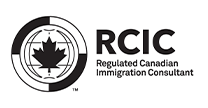IRCC Backlog Declines by Nearly 8%: A Sign of Steady Progress in Canadian Immigration Processing
In a welcome development for immigrants, applicants, and stakeholders in Canada’s immigration ecosystem, Immigration, Refugees and Citizenship Canada (IRCC) has made noticeable strides in reducing its application backlog. As of February 28, 2025, IRCC reported a total of 821,200 applications in backlog — a significant 7.95% decrease from the previous month’s figure of 892,100.
This reduction is not just a monthly anomaly; it marks the third consecutive month where the backlog remained under the one million mark, reflecting a consistent downward trend and commitment to faster processing timelines. For many, this signals hope — particularly for applicants stuck in extended waiting periods — and a potential return to more predictable immigration processing in the months ahead.
Understanding the Backlog: What Does It Mean?
In immigration processing, the term “backlog” refers to the number of applications that have not been processed within IRCC’s established service standards. These service standards vary depending on the type of application:
-
Express Entry (Federal Skilled Worker, Canadian Experience Class, etc.): 6 months
-
Family sponsorship: 12 months
-
Work permits, study permits, visitor visas: Varies, usually a few weeks to several months
-
Citizenship applications: Around 12 months
IRCC aims to process 80% of applications within these timelines, acknowledging that the remaining 20% are often complex or require additional review. Any applications that exceed these timeframes fall into the “backlog.”
The Numbers: A Month-by-Month Breakdown
Here’s a snapshot of how the backlog has changed over the past six months:
| Month | Immigration Backlog | % Change vs. Previous Month |
|---|---|---|
| September 2024 | 1,097,000 | +1.73% |
| October 2024 | 1,056,100 | -3.73% |
| November 2024 | 1,006,500 | -4.70% |
| December 2024 | 942,300 | -6.38% |
| January 2025 | 892,100 | -5.33% |
| February 2025 | 821,200 | -7.95% |
The steady decline over six months points to not only a strategic prioritization by IRCC but also to deeper structural and technological improvements aimed at faster processing.
Total Applications in Inventory
While the backlog itself is shrinking, it’s important to consider the total number of applications in IRCC’s inventory, which remains high:
-
Total applications in IRCC inventory (as of Feb 28, 2025): 2,029,400
-
Applications processed within service standards: 1,208,200
-
Applications considered backlog: 821,200
This highlights that while the backlog is dropping, the overall volume of applications remains considerable. Nonetheless, maintaining service standards for a majority of the applications is a promising sign.
Permanent Residence Applications: Mixed Progress
IRCC had 842,600 permanent residence (PR) applications in its inventory at the end of February 2025. This includes various categories:
-
Express Entry (EE)
-
Provincial Nominee Program (PNP)
-
Family sponsorship
-
Refugees and humanitarian applications
Applications Within Service Standards:
-
478,600 (57%) were being processed on time
-
364,000 (43%) were part of the backlog
Express Entry:
-
25% of EE applications were considered backlogged — higher than IRCC’s target of 20%.
-
This slight excess might reflect a surge in applications or bottlenecks in processing complex files.
Provincial Nominee Program (PNP):
-
The backlog in PNPs rose from 30% to 36% within a month — an area of concern, given the role of PNPs in targeting regional labor market needs.
Family Sponsorship:
-
Bright spot: only 14% of these applications were in backlog — a decline from 15% the previous month.
-
This is good news for families waiting to reunite with loved ones.
Temporary Residence Applications: The Real Bottleneck
IRCC’s temporary resident stream continues to be challenged by high demand, particularly for visitor visas and study permits.
As of February 28, 2025:
-
Total TR applications in inventory: 947,200
-
Processed within service standards: 532,700
-
Backlog: 414,500 (44%)
Breakdown by Program:
Visitor Visas:
-
65% of visitor visa applications are in backlog, compared to a projected rate of 50%.
-
This is the worst-performing category, likely due to post-pandemic travel surges and demand from tourists and family visitors.
Study Permits:
-
45% of study permit applications were in backlog — unchanged from the previous month.
-
However, the projected backlog has now dropped to 24%, suggesting IRCC intends to scale down volumes through caps and stricter acceptance criteria.
Work Permits:
-
Encouraging trend: backlog fell to 34%, the lowest since July 2023.
-
Indicates IRCC is prioritizing work permit applications to meet labor market demands.
Citizenship Applications: Holding Steady
The citizenship stream remains the most efficient among IRCC’s programs.
As of February 28, 2025:
-
Total citizenship applications: 239,600
-
Processed within service standards: 196,900 (82%)
-
Backlog: 18%
These numbers remain consistent with the previous month and are within the department’s target range, making it the most stable and predictable processing stream.
Why Is the Backlog Shrinking? Key Factors Behind the Progress
IRCC’s recent gains in backlog reduction can be attributed to a multi-pronged strategy that includes both administrative reforms and long-term policy shifts.
🔹 1. Technological Enhancements
One of the most transformative changes came in November 2024, when IRCC officially rolled out advanced analytics and automation tools. These tools:
-
Assist with routine decisions (e.g., confirming eligibility)
-
Sort applications by complexity
-
Flag high-risk or unusual cases for human officer review
-
Generate summaries and reports to assist officers in decision-making
By automating simple and repetitive tasks, officers can now spend more time on nuanced cases, leading to quicker turnaround across the board.
🔹 2. Application Caps
IRCC has also capped intake for specific streams, most notably study permits. These limits help control inventory size and ensure that the department does not get overwhelmed with unmanageable volumes.
By proactively managing intake, IRCC can better allocate resources and maintain service standards, especially during peak seasons like back-to-school and holidays.
🔹 3. Lower Immigration Targets
In October 2024, the Canadian government unveiled its Immigration Levels Plan for 2025-2027, which introduced lower PR admission targets over the next three years. While this sparked debate in political and economic circles, it had one undeniable benefit: it eased pressure on processing systems.
By managing how many people are admitted, IRCC can better handle the applications already in the pipeline — which is essential for maintaining public confidence in Canada’s immigration system.
🔹 4. Global Staffing & Remote Processing
IRCC has expanded overseas processing capacity by leveraging remote officers and utilizing staff in lower-demand regions to process applications from high-volume centers. This shift also involves weekend and overtime hours for key processing roles — ensuring round-the-clock progress.
What Applicants Should Expect Going Forward
If you’re an applicant — or planning to apply soon — here’s what you can expect based on current trends:
✅ Faster processing times in high-priority categories (e.g., work permits, family sponsorships)
✅ Longer waits in visitor visa and PNP streams
✅ Stricter eligibility and documentation checks, especially for study permits
✅ More automation and online updates — expect to see decisions faster and more tracking options
Conclusion: Progress With Caution
The IRCC’s backlog reduction is undoubtedly a positive development, and it reflects serious commitment and restructuring within the department. However, it’s also a reminder that immigration processing is a dynamic, resource-intensive effort — subject to shifting targets, international pressures, and demand cycles.
For applicants, the message is clear: Prepare early, apply accurately, and stay updated. And if you’re unsure, connect with experienced consultants who can guide you through the evolving process.
📍 Need Help with Your Application?
We’re here to assist you with immigration pathways including Express Entry, PNP, study permits, work permits, sponsorships, and more.
📍 Saskatoon: 535 20th St W, Unit-C, Saskatoon, SK S7M 0X6
📍 Regina: Unit 170 – 2410 Dewdney Ave, Regina, SK S4R 1H6
📍 Dhaka: Apt-2D, H-396, R-6 Avenue 3, Mirpur DOHS, Dhaka 1216
🌐 Website: www.guidemeimmigration.com
📞 Call: +1 (306) 700 7440
✉ Email: info@guidemeimmigration.com
Let our expertise work for you — because your journey to Canada deserves the best guidance.
Other Link:http://go-get.ca







